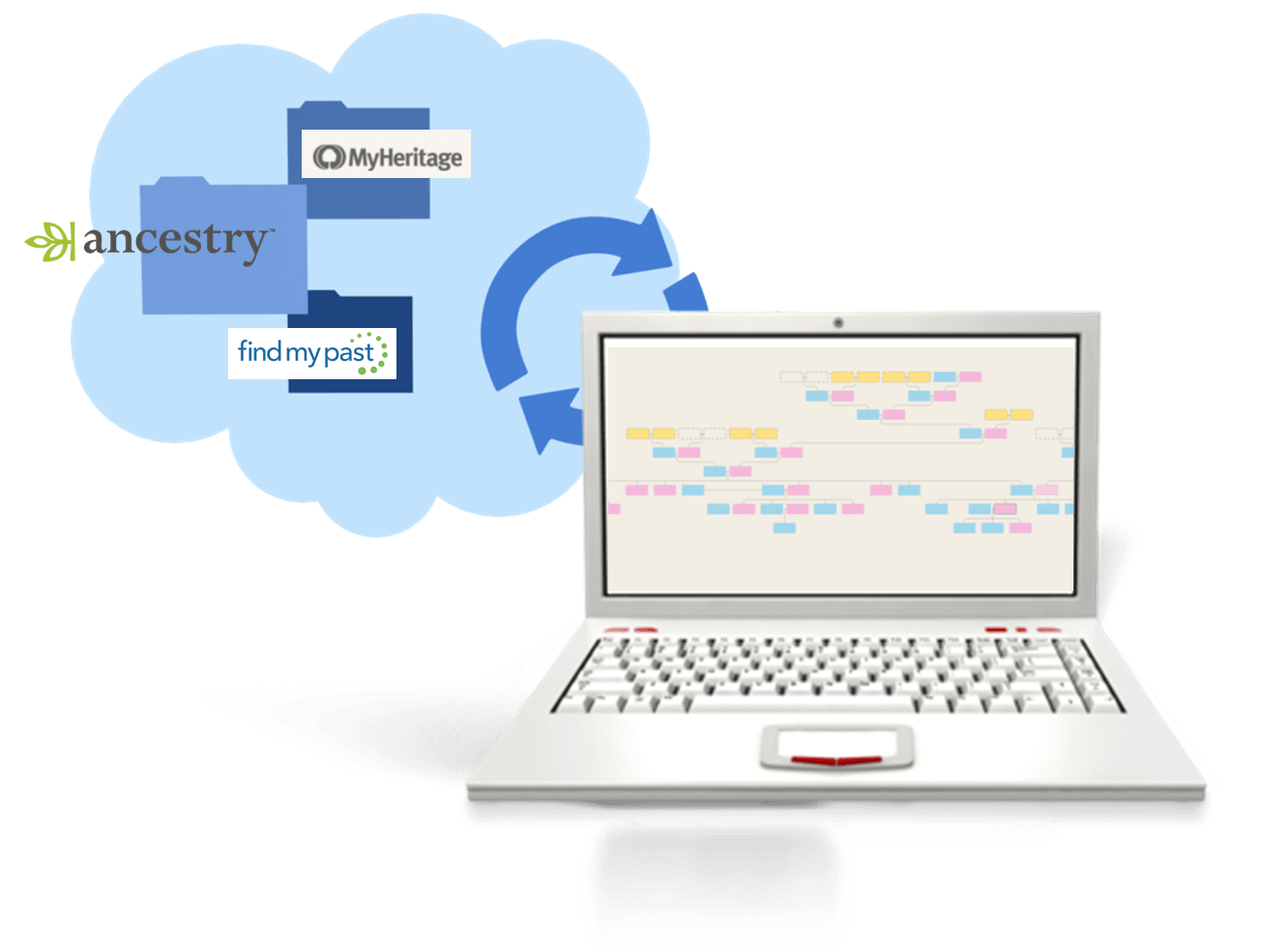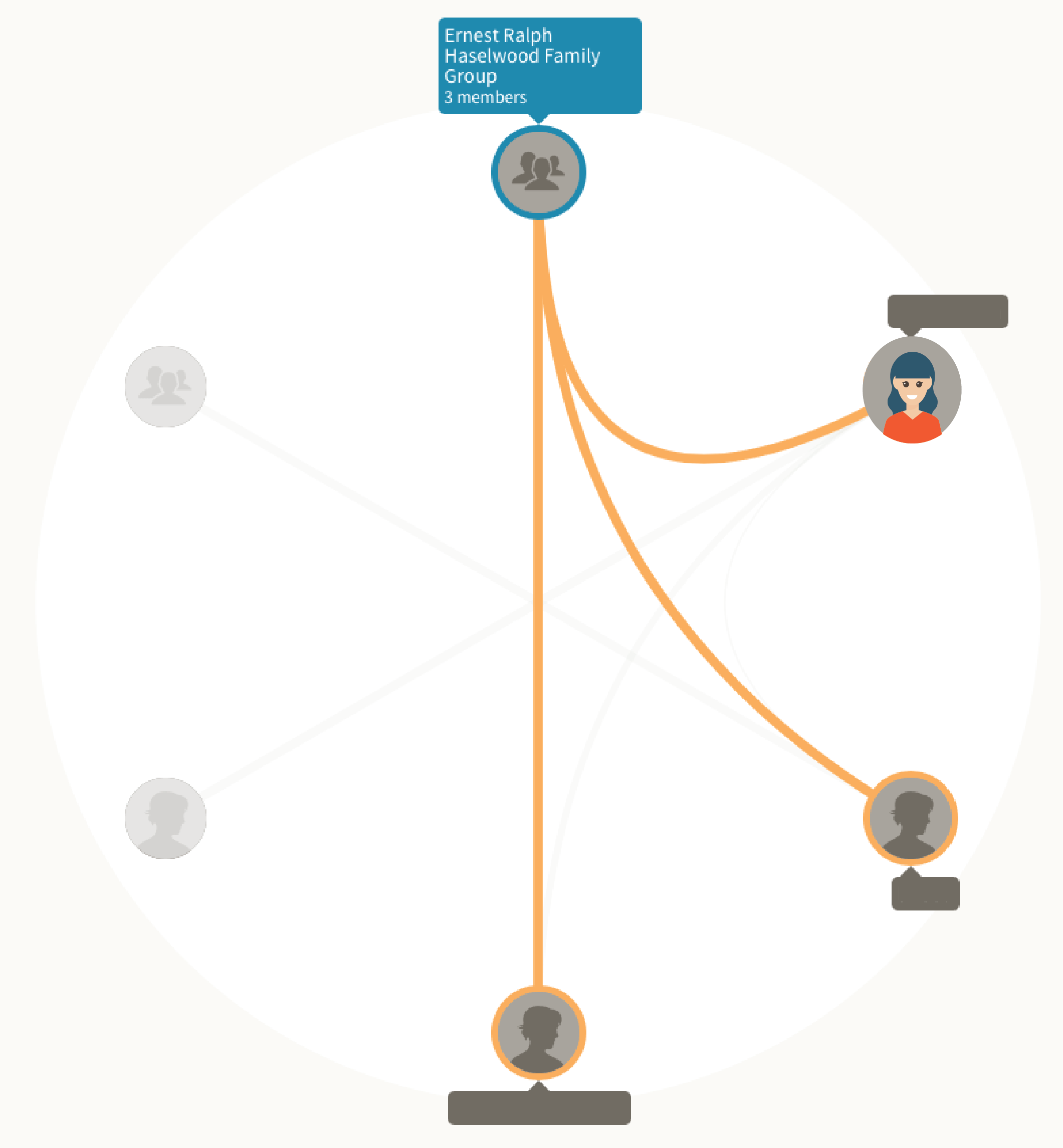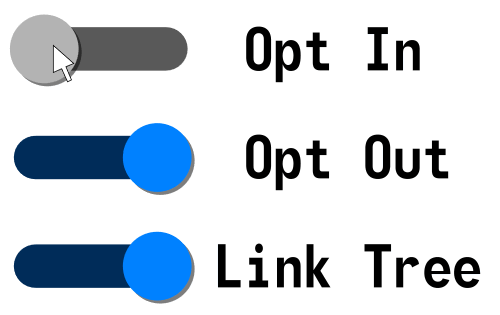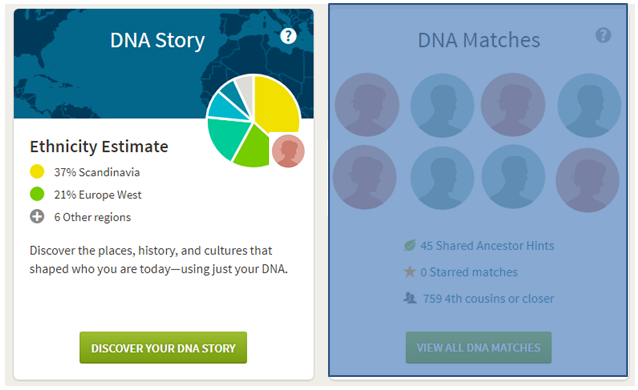by Lisa Cooke | Jan 10, 2016 | 01 What's New, Ancestry, MyHeritage, RootsMagic, Trees
Want tips to keep your online trees current with the master version in your family tree software? I’ve fielded several questions recently from Family Tree Maker users that might be useful to everyone.
In the wake of the announced retirement of Family Tree Maker software, questions continue to pour in about how to use family history software along with online trees. I’ve also taken a couple of questions from people wondering whether to continue their subscriptions at Ancestry.com if they’re not using Family Tree Maker. Find my answers below–and thanks to Gladys, Charles, Lisa and others for sending in these great questions!
Q: “Why switch from Family Tree Maker if it still “works” even after it’s retired? Ancestry.com and its tree system can be continually updated via GEDCOMs (click here to learn more about GEDCOMs) from one’s current Family Tree Maker for as long as one desires. The key problem is that support for FTM will soon disappear.”
A: Yes, you’re right, the key probably is that support will be gone. Into the future, as operating systems and hardware change, FTM users will likely eventually experience problems and ultimately be unable to continue reinstalling it onto new computers. (As I mentioned in this article, this happened to me with my first database.) While it isn’t an emergency, there is an advantage to migrating now. Other companies are offering great specials, and are currently knowledgeable and focused on assisting FTM users in making the move and ensuring that all of their data migrates successfully. Click here to learn about some of these specials.
RootsMagic is a sponsor of the Genealogy Gems Podcast, and the software that I use personally. The following question came from a listener who wanted to know more about it and how to move their data:
Q: “Can you explain more about RootsMagic and what it can do? Will it allow a transfer of data from the old Family Tree Maker files where I have already stored significant amounts of information?”
A: You can download your content from Ancestry and then load that into RootstMagic. This article on the RootsMagic blog will guide you. And they have an entire “Help” page here devoted specifically to assisting Family Tree Maker users. (Click here to learn why I recommend RootsMagic, which is a sponsor of the free Genealogy Gems podcast.)
Q: “Should I just resign myself to having to upload a new GEDCOM to RootsMagic every month to add any new people/content I’ve found on Ancestry.com?”
A: Rather than adding info to my Ancestry tree and then duplicating it in RootsMagic, I look at it the other way around. I enter new found data directly into RootsMagic as I work. I may go ahead and add it to my Ancestry tree as well, but it really depends on what it is. You see, I view my Ancestry.com tree as a drafting table or a work space, not the final resting place for my family tree. For me, a little extra effort is worth keeping control of my data.
I really don’t foresee Ancestry.com resurrecting Family Tree Maker or selling it to another company. This article explains some of the business reasons why.
Q: “If I continue to use Ancestry.com and add content to my online tree, what is the best way to get that content into my RootsMagic tree?”
A: You can download your content from Ancestry and then load that into RootsMagic. This article on the RootsMagic blog will guide you. I think after reading all my answers here you will see that I use Ancestry and MyHeritage as research tools, and RootsMagic as my master complete genealogy database. So I leave RootsMagic open on my computer in the background, and pop over to that window to enter confirmed data as I am working on the various websites.
BONUS QUESTIONS! Ancestry.com and MyHeritage.com Subscriptions
Here are my responses to Family Tree Maker user questions about where to invest their subscription dollars and efforts.
Q: “Do you recommend not using Ancestry.com for research anymore?”
A: I think Ancestry is a treasure trove of genealogical data and documents, and I absolutely will continue to use it. However, as I mentioned in my article, I’m a believer in housing my master family tree on my own computer, and backing up that computer to the cloud (I use BackBlaze. I like the service so much they have become a sponsor of the Genealogy Gems Podcast.) That way I control the data and know it is protected. I don’t use Ancestry trees for my master tree. Rather, I upload a GEDCOM of the branches I want to generate leads for (shaky leaves). When I find new information I may or may not add it to my Ancestry tree (based on my research needs) but I always add it to RootsMagic master database.
Q: “Should I switch to MyHeritage?”
A: MyHeritage is a great website as well. I use it in much the same way I use Ancestry (above). It has been invaluable for my international research. (Click here to learn why I recommend MyHeritage.com, which is also a sponsor of the free Genealogy Gems podcast.)
Final thoughts: In the end, it’s your data and your decision. I hope you’ve found these conversations helpful as you do your own homework on what is right for your family tree.
More Gems on Family History Software and Online Trees
 Family Tree Maker Alternatives and What I Do With My Online Tree
Family Tree Maker Alternatives and What I Do With My Online Tree
How to Download and Backup Your Ancestry Data
Is that Software Expired? Why I Wouldn’t Use Obsolete Family Tree Maker Software
by Lisa Cooke | Dec 26, 2015 | 01 What's New, Ancestry, DNA, Trees
DNA Circles at AncestryDNA can get problematic when participants’ trees are unverified. This is why.

Adding people to a family tree without verifying the connection is a fairly common genealogical practice. This happens a lot when people “graft” information from another online tree.
In addition to the problems this can create in your tree, it can create problems when you start looking at genetic connections. We have received a few inquiries about this topic here at Genealogy Gems, and I chatted with a fellow genealogist about this at a recent conference.
The practice of copying online trees factors most heavily in the DNA Circles and New Ancestor Discoveries (NAD) at AncestryDNA. You will remember from our previous conversations that these tools are like parties that your DNA has secured your tickets to attend. Each of these parties is “hosted” by one of your ancestors, in the case of the DNA circle, and a presumed ancestor, in the case of a NAD. Sometimes we catch ourselves declaring that our membership in the DNA circle “proves” our connection to the party host.
But we must be careful. Because it does not.
 “Proves” is too strong of a word. All your membership in the DNA circle can really tell you is that you have a genetic connection to those marked with the orange line. Those with the grey connecting lines have a DNA connection to some of the circle members, but not to you. Placing the name of an ancestor on the cover of this gathering does not guarantee that the named person is your common ancestor. It is just a suggestion; a hint.
“Proves” is too strong of a word. All your membership in the DNA circle can really tell you is that you have a genetic connection to those marked with the orange line. Those with the grey connecting lines have a DNA connection to some of the circle members, but not to you. Placing the name of an ancestor on the cover of this gathering does not guarantee that the named person is your common ancestor. It is just a suggestion; a hint.
Think about this for just a second. Let’s say that Joan does a bit of research and decides that her immigrant ancestor’s father is Marcus Reese, born in 1823 in Wales. She adds this to her pedigree chart. She sees on a census record that he had four children, one of whom shared the name of her ancestor, William, and adds those to her chart as well.
Months later, Charlotte is researching her Mary Reese and sees Mary listed on Joan’s pedigree chart as the child of Marcus. She knows Mary’s father was born in Wales and adds Marcus to her pedigree chart telling herself that she will go back later and double check. And so on.
After a while, we have 7 people all connected back through Marcus and his four children, and they all independently decided to get their DNA tested through Ancestry.com.
Ancestry sees their shared DNA and that they have all listed Marcus Reese as their common ancestor. So they create a DNA circle for the seven of them, with Marcus Reese at the head.
Ancestry did not look at the number of cited sources or the myriad of other genealogical possibilities about how these seven individuals could all be related to each other. It saw a genetic connection and a genealogical hypothesis, and it presented them to you in the form of a DNA circle.
The genetic evidence supports a single common ancestor for these 7 people, but it certainly does not have to be Marcus Reese. You can become more certain as you gather the traditional genealogical evidence that you would in any other case. As your documentation mounts, so will your confidence, with the DNA acting like an invitation to keep searching for further evidence of your connection.
 If you enjoyed this post, you’ll love my series of DNA for genealogy quick guides. Each laminated guide–with quick, clear text that helps you act on what you learn–is targeted to a specific DNA topic, from “Getting Started” to the three types of DNA tests you can take to understanding your results with testing companies AncestryDNA, FamilyTreeDNA and 23andMe. Why not grab the “super bundle” of all 10 guides? You can also shop for them individually here.
If you enjoyed this post, you’ll love my series of DNA for genealogy quick guides. Each laminated guide–with quick, clear text that helps you act on what you learn–is targeted to a specific DNA topic, from “Getting Started” to the three types of DNA tests you can take to understanding your results with testing companies AncestryDNA, FamilyTreeDNA and 23andMe. Why not grab the “super bundle” of all 10 guides? You can also shop for them individually here.
Disclosure: This article contains affiliate links and Genealogy Gems will be compensated if you make a purchase after clicking on these links (at no additional cost to you). Thank you for supporting Genealogy Gems!

by Lisa Cooke | Nov 29, 2017 | 01 What's New, Ancestry, DNA
A new AncestryDNA opt-out option allows DNA test takers to not participate in DNA match lists: they do not receive matches or show up in others’ match lists. Your DNA Guide Diahan Southard weighs on in the implications for genealogy researchers who may worry about cousin matches they may miss.

New AncestryDNA Opt-Out Policy
 Ancestry.com recently announced an update to their privacy policy. Current and future AncestryDNA users now have the option to opt out of the DNA matching feature.
Ancestry.com recently announced an update to their privacy policy. Current and future AncestryDNA users now have the option to opt out of the DNA matching feature.
When you take a DNA test, you receive two different kinds of results from the DNA sample that you submit to your testing company:
- information about your ancestral origins and
- a list of your DNA cousins.
Opting out of matching essentially cuts the value of this product in half. You only get the ancestral origin information, and you forfeit access to your list of genetic matches. Opting out doesn’t just mean you can’t see them: it means that they can’t see you either.
AncestryDNA joins 23andMe in providing this option to their clients. You can look at this move as Ancestry’s response to an ever-expanding global audience, many of whom are not genealogists or are reluctant to have their DNA compared to others for a variety of reasons. It is important for them as a company to provide options for their clients to experience their product in a way that works best for them.
What the AncestryDNA Opt-Out Policy May Mean for You
 What does this new opt-out option mean for genealogists? Hopefully, not much will change. Ancestry reports that overwhelmingly, people are opting in.
What does this new opt-out option mean for genealogists? Hopefully, not much will change. Ancestry reports that overwhelmingly, people are opting in.
There has been quite a bit of push-back to this announcement, especially from the adoption community. DNA testing has been a tremendous source of information for those seeking out their biological relatives, and many fear that this change will limit access to quality DNA matches. But we will all still be able to do good genetic genealogy work, even as we are each allowed to choose whether to participate in the matching feature. To understand this better, it is important to see this issue from the other side, from the side of a person who might want to opt out. Here are two possible scenarios:
Scenario #1: Susan would really like to explore her heritage. She hasn’t tested before because she didn’t want to see cousin matches for a variety of personal reasons. But now she does test and opts-out. The community hasn’t lost anything because Susan would never have tested in the first place. But after exploring her ethnicity results and noticing membership in a couple of Genetic Communities, she begins to wonder more about her ancestors and decides to opt-in to matching, after all. In this scenario, the Opt-Out policy offers users a way to comfortably give DNA testing a try.
Scenario #2: Ryan heard about AncestryDNA while watching TV last year and ordered a kit. But then last week he heard about the ability to opt out, and went in and changed his account settings. So one day you could see Ryan on your match list, and the next you didn’t. We as a community would certainly see that as a loss. However, consider the circumstances that might have caused Ryan to hit that opt-out button. Perhaps Ryan had no idea how to use the match list, no interest in using it, and found it a bother to get correspondence from people. Perhaps Ryan found something unexpected, like that he wasn’t his father’s child, and he needed some time to deal with it. Maybe Ryan is under pressure from his sister, who didn’t want him to test in the first place (perhaps she knows something he doesn’t about their family tree, or she’s afraid of how any results and revelations might impact her). The short of it is: It doesn’t matter why Ryan opted out, it is his personal right to do so. Just as an adoptee has the right to seek out their heritage, others have the right to keep their family secrets to themselves. This scenario does support the idea that you should review your DNA matches frequently and record information about them in your own master match list, which I talk about in my quick reference guides, Organizing Your DNA Matches and Breaking Down Brick Walls with DNA. By promptly recording matching results, you will have them to work with even if the tester decides later on down the road to opt out.
As a genealogy community, we can educate others about the value of the match list, while at the same time cautioning them that unexpected connections may appear. So in everyday conversations, share your own experiences—whatever these may be. Maybe it was affirming for you to see that the dad you grew up knowing is indeed your biological father. Perhaps you can share a story about the power of using a list of fourth cousins to discover information about your third-great-grandfather. Maybe you’ve discovered a new connection—and maybe that connection isn’t yet comfortable or fully explained, but you’re glad to know about it.
Learn More about AncestryDNA Testing
Get the most out of your AncestryDNA testing experience with my quick reference guides! I recommend:
- A Guide to AncestryDNA How to find your best DNA matches, interpret ethnicity results, link your tree, understand relationship ranges and DNA Circles, and work with Shaky Leaf hints.
- Autosomal DNA for the Genealogist. What autosomal test can tell you, who can be tested, how to interpret your ethnicity results, and more.
- Organizing Your DNA Matches. How to keep track of your matches and apply what you learn from them to your family history.
- Breaking Down Brick Walls with DNA. What to do next to maximize the power of DNA testing in genealogy. Take your DNA testing experience to the next level and make new discoveries about your ancestors and heritage!
Disclosure: This article contains affiliate links and Genealogy Gems will be compensated if you make a purchase after clicking on these links (at no additional cost to you). Thank you for supporting Genealogy Gems!

 Family Tree Maker Alternatives and What I Do With My Online Tree
Family Tree Maker Alternatives and What I Do With My Online Tree


 If you enjoyed this post, you’ll love my series of DNA for genealogy quick guides. Each laminated guide–with quick, clear text that helps you act on what you learn–is targeted to a specific DNA topic, from “Getting Started” to the three types of DNA tests you can take to understanding your results with testing companies
If you enjoyed this post, you’ll love my series of DNA for genealogy quick guides. Each laminated guide–with quick, clear text that helps you act on what you learn–is targeted to a specific DNA topic, from “Getting Started” to the three types of DNA tests you can take to understanding your results with testing companies 
 Ancestry.com
Ancestry.com 